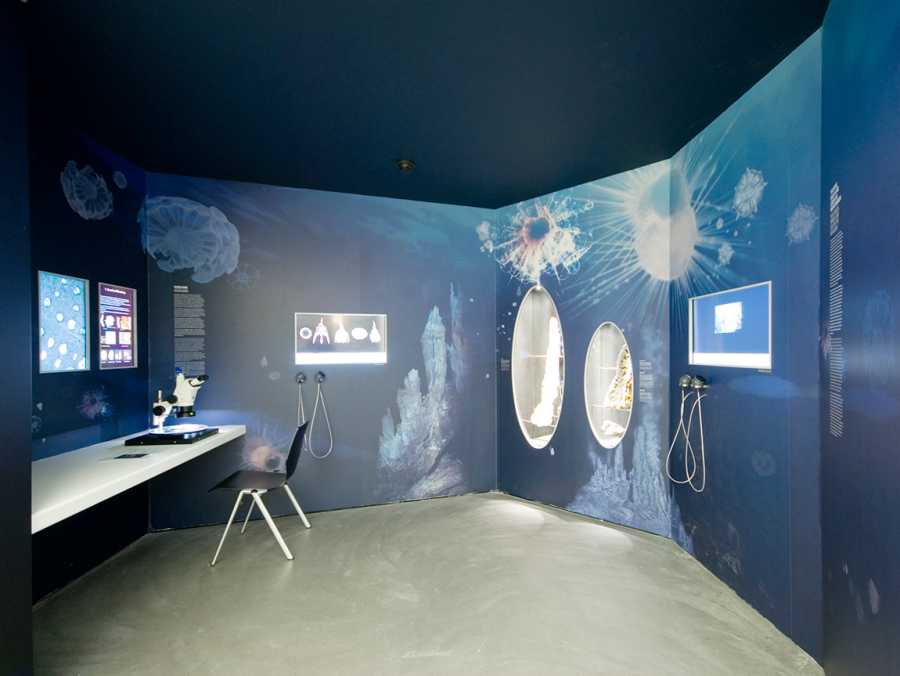Archives of the Earth
Floor F (uppermost floor)
-

Images: Radek Brunecký -

-

Sedimentary rocks and their depositional environments are archives of the Earth’s history from which environmental conditions of earlier time periods can be inferred. Over thousands and millions of years sediments record processes on the surface of the Earth as well as the long-term evolution of many groups of organisms. For example moraines are products of glaciations, river deposits mirror the rise of mountain ranges in the hinterland, and fossils in sedimentary rocks tell us about the sequence of cold and warm periods and document past changes of life on Earth. Sediments can originate on the continents as a result of the weathering of rocks. Particles are transported by rivers through valleys to lakes and into the sea where resistant hard parts of dead organisms provide further material for sediment layers slowly accumulating on the seafloor. In shallow waters corals grow their carbonate skeletons forming reefs, which later recrystallise into limestone.
Catastrophic events such as large eruptions of volcanoes and impacts of meteorites and asteroids have left their traces in the sediments too. During the Earth’s history sudden changes in the composition of the fossil content in the sediments, called mass extinctions, have been linked to such catastrophic events.
Even though the oceans cover more than two thirds of the Earth’s surface, they are poorly studied compared to the continents. Researchers believe that life on Earth may have originated in the hydrothermal vents of the deep-sea. To this day at these locations and in complete darkness simple archaic organisms exist by extracting vital nutrients from hot springs. However, the oldest traces of life are over 3 billion year old stromatolites which are finely layered carbonate structures that are still built today by the activity of photosynthesising microorganisms in warm shallow seas. Only during the past 500 million years have plants and animals conquered dry land.
What's to see?
- Palaeobotany: The Evolution of the plants in the Earth History, plants as indicators of environmental changes
- Sedimentation: Sedimentary rocks give information about the climatic, hydrodynamic and geomorphologic environment at the Earth's surface at time of their deposit
- Traces in the mud: Environmental changes in the Zurich lake
- Climate changes during the history of the Earth
- Oceans: the formation of the sediments on the ocean floor. Formanifera as small construction particles of the sediments
- Volcanos, smoke and life on the oceanfloor: Lost City and Black Smokers
- Landscape of Zurich over the last 12 Mio years:
The illustration on the left shows the present landscape around the city of Zurich with the basin of the lake and the Zurich's moraine arc as the result of the last advance and retreat of the Linth-Glacier 24,000 to 16,000 years ago.
The illustration on the right shows a wide alluvial plain with meandering rivers and freshwater lakes, as it probably was 12 million years ago in the area around today’s city of Zurich. During this time the climate was relatively warm.
